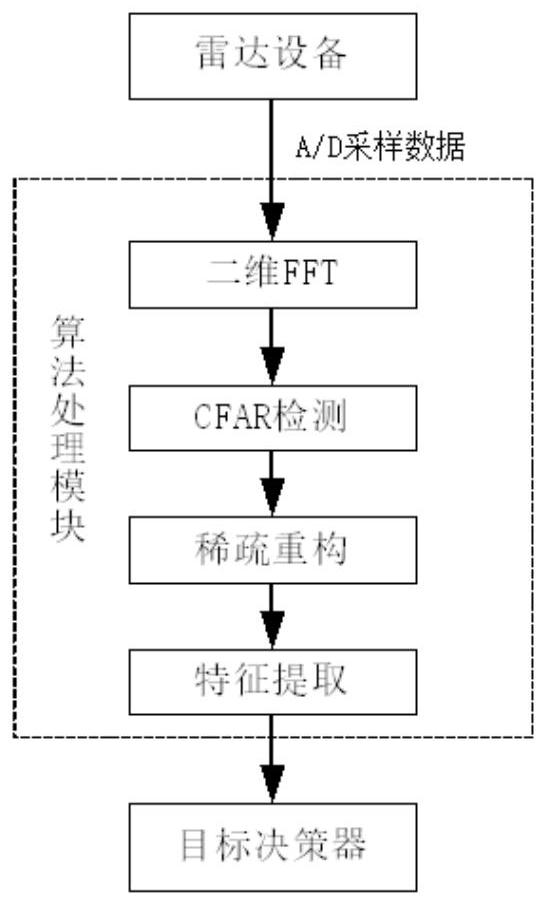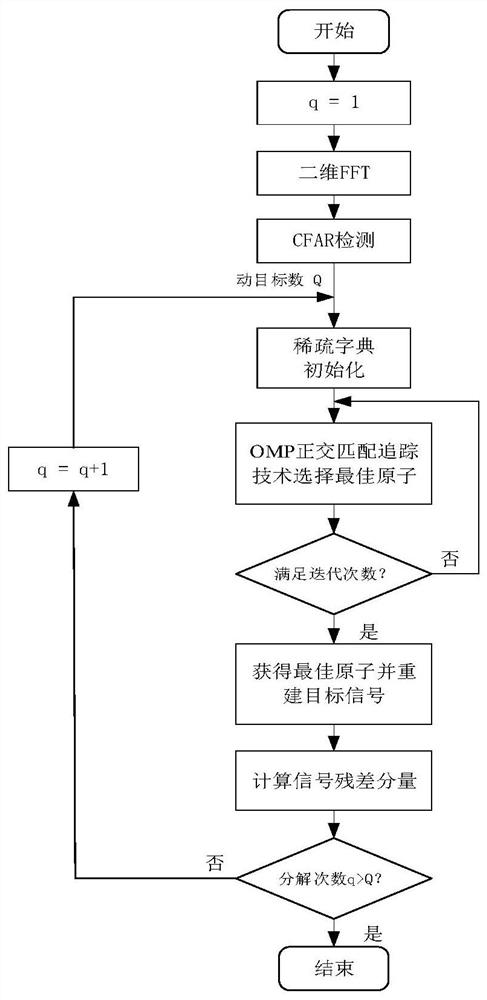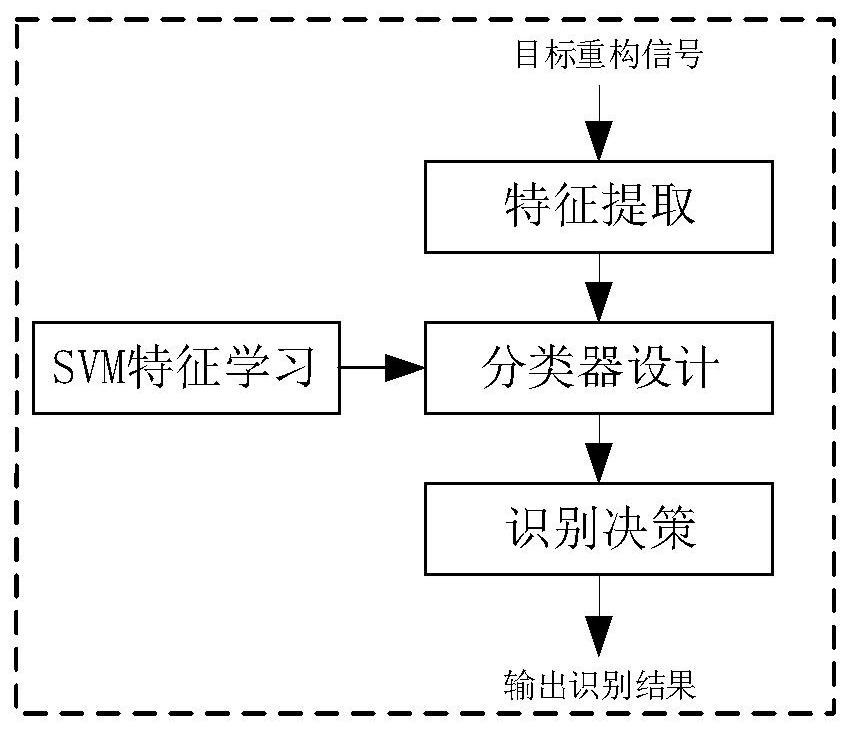A Radar Pedestrian Detection Method Based on Time-Frequency Domain Sparse Reconstruction
A sparse reconstruction, pedestrian detection technology, applied in the field of radar signal processing and target recognition, can solve the problem of low radar detection rate, and achieve the effect of improving search accuracy, improving detection accuracy, and easy feature extraction
- Summary
- Abstract
- Description
- Claims
- Application Information
AI Technical Summary
Problems solved by technology
Method used
Image
Examples
Embodiment Construction
[0060] Definition of Abbreviations and Key Terms
[0061] FFT (Fast Fourier Transform, Fast Fourier Transform)
[0062] CFAR (constant false alarm rate, constant false alarm)
[0063] PRI (pulse repetition period, pulse repetition period)
[0064] OMP (Orthogonal Matching Pursuit, Orthogonal Matching Pursuit)
[0065] SVM (Support Vector Machine, support vector machine)
[0066] The invention proposes a radar pedestrian detection system based on time-frequency domain sparse reconstruction. When a person moves forward, the torso and limbs will swing regularly, that is, the micro-movement of the target presents a micro-Doppler effect in the radar signal. The pedestrian detection system of the present invention is completed by studying the Doppler shift of the radar echo and its phase change law, and combining the sparse signal processing technology.
[0067] In order to make the object, technical solution and advantages of the present invention clearer, the present inventio...
PUM
 Login to View More
Login to View More Abstract
Description
Claims
Application Information
 Login to View More
Login to View More - R&D
- Intellectual Property
- Life Sciences
- Materials
- Tech Scout
- Unparalleled Data Quality
- Higher Quality Content
- 60% Fewer Hallucinations
Browse by: Latest US Patents, China's latest patents, Technical Efficacy Thesaurus, Application Domain, Technology Topic, Popular Technical Reports.
© 2025 PatSnap. All rights reserved.Legal|Privacy policy|Modern Slavery Act Transparency Statement|Sitemap|About US| Contact US: help@patsnap.com



